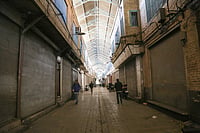If you are an avid mountain climber and trekker, there’s bad new for you. Studies indicate that global warming will thin glaciers, and develop supra-glacial (surface) ponds and large glacial lakes, in the Himalayas, including in the Mt Everest region. These trends will only accelerate in the near future. According to one study, they will “increasingly restrict access to the glacier surfaces and affect popular trekking routes and mountaineering activities.” It estimates that the “Kongma La Pass across the Khumbu glacier is likely to be impassable by 2020,” and “rock-fall activity is likely to increase… as snow and ice melts… requiring changes to climbing routes on the world’s highest peaks.”
Similar meltdowns are visible across the globe. A 2018 study found that between 2004 and 2016, “the total glacier area on Mt Kenya (Africa) decreased by 44%”, and the “largest glacier (Lewis) lost 46% of its area and 57% of its volume during the same period”. At the current rate, “Mt Kenya’s glaciers will be extinct before 2030.” According to data on NASA’s website, between 2010 and 2018, the Yakutat Glacier in Alaska “retreated 45 square kilometer,” which is an “area of ice loss equal to the area of 25,000 Olympic-sized ice skating rinks.” It is one of the fastest retreating glaciers in the world, and has fragmented into several smaller ones.
Glaciers are important because they, according to a website, “provide communities and ecosystems with reliable source of stream flow and drinking water,” and “freshwater run-off from glaciers also influences ocean ecosystems.” About three-fourths of the Earth’s fresh water is stored in glacial ice, 91% of which lies in Antarctica. Some of the glaciers can be ancient; the oldest is more than eight million years old. The website concludes, “On overage, glaciers worldwide have been losing mass (ice) since at least the 1970s, which in turn has contributed to observed changes in sea level.” The process has accelerated over roughly the last decade.


























